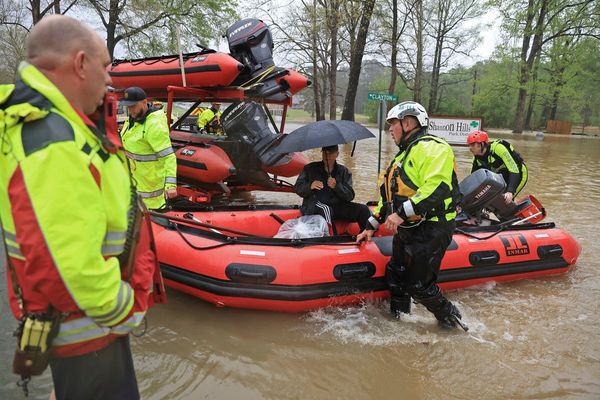
Poor air quality returned to the north-east US on Sunday, although it was nowhere near as bad as the heavy haze that recently shrouded the region and triggered global headlines as wind-borne smoke from raging Canadian wildfires caused orange skies, thick smog and record-setting pollutant levels.
On Sunday morning, a smoke plume moved across New York City, leaving the air quality index in the city at 103 and categorized as “unhealthy for sensitive groups”, particularly for those with heart or lung problems.
According to the city’s environment and health data portal, the air quality has largely been improving over time since the thick yellowish haze covered the city last week as a result of smoke from the wildfires which continue to burn in Canada’s forests with little sign of being put out soon.
However, hour by hour, there is still large variation in the air quality, “even in neighborhoods with the cleanest air”, said the portal.
“That means for short periods, some New Yorkers are exposed to high levels of pollutants,” it added.
In Pennsylvania, the state department of environmental protection declared on Sunday an air quality action day and issued a code orange alert. The alert came as a result of elevated ozone levels across three regions of Pennsylvania, including the Philadelphia area, the Lehigh valley, and the central Pennsylvania counties of Cumberland, Dauphin, Lancaster, Lebanon and York, Penn Live reported.
According to the department, young children, the elderly and those with respiratory issues are especially vulnerable to the effects of air pollution and should limit outdoor activities.
Ozone forms as a result of airborne chemicals such as carbon monoxide and nitrogen oxide reacting with sunlight. High ozone levels are most common during summer months due to long days of sunshine and high levels of airborne chemicals.
The department encouraged residents on Sunday to conserve electricity by setting air conditioning to a higher temperature, combining errands to reduce vehicle trips, limiting engine idling, and refueling cars and trucks after dusk.
The Maryland environmental department has also issued a code orange alert for Sunday in the Baltimore region.
“USG [unhealthy for sensitive groups] air quality due to ozone expected around and north-east of Baltimore Sunday as sun and heat returns in the presence of diffuse smoke and a dirtied airmass transported from the south,” the environmental department said.
In a tweet on Sunday, WBAL-TV meteorologist Dalencia Jenkins said that the poor quality in the Baltimore metro and Annapolis region is “not entirely because of wildfire smoke, but the ozone pollutants in the air”.
“If you are part of an air pollutants-sensitive population, try to limit time outdoors today,” Jenkins added.
Meanwhile, hundreds of wildfires continued to burn as firefighters from various countries mobilized to help Canada battle the flames. As of Friday, there were 421 fires still burning, according to the Canadian Interagency Forest Fire Centre.







